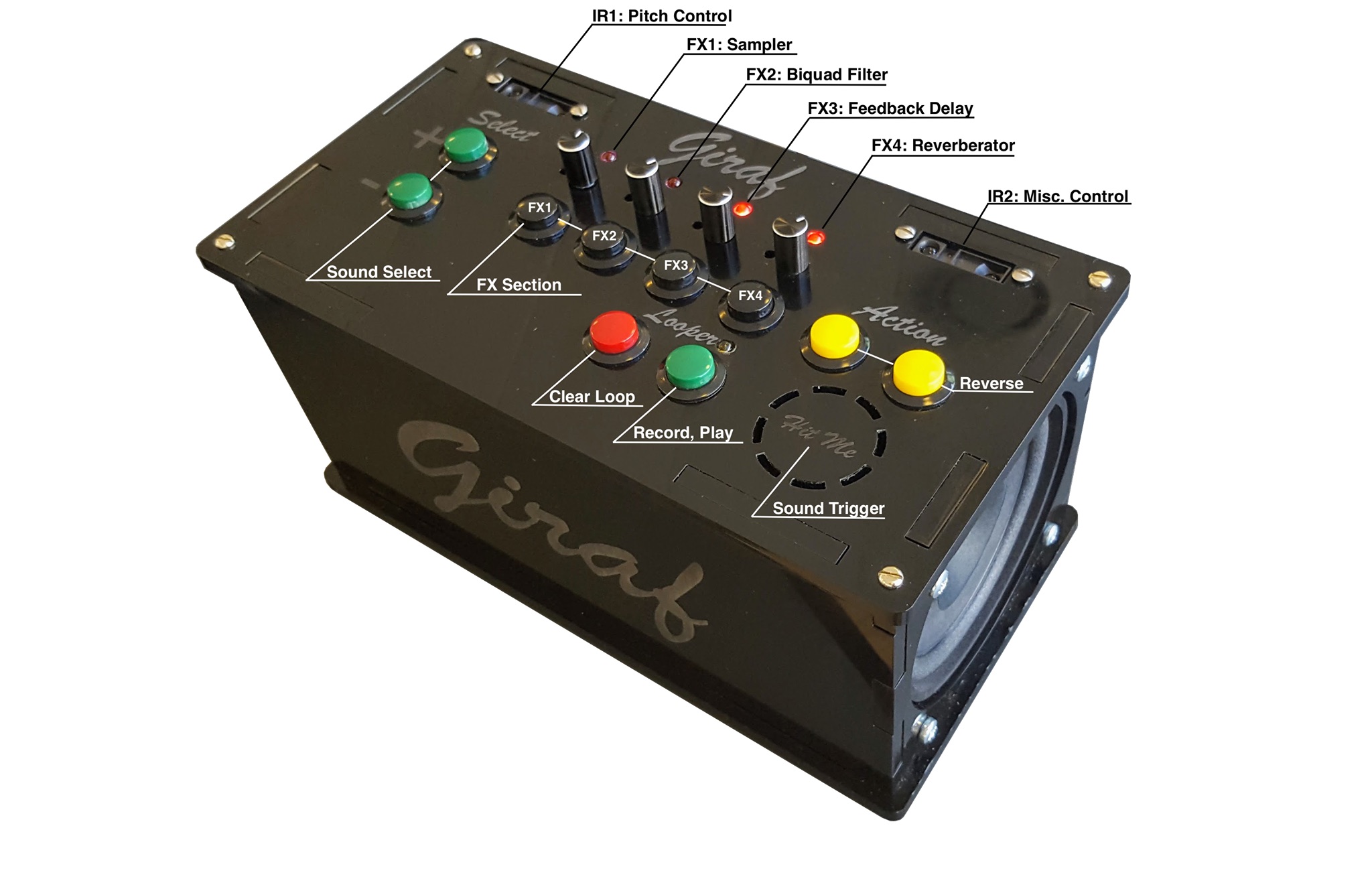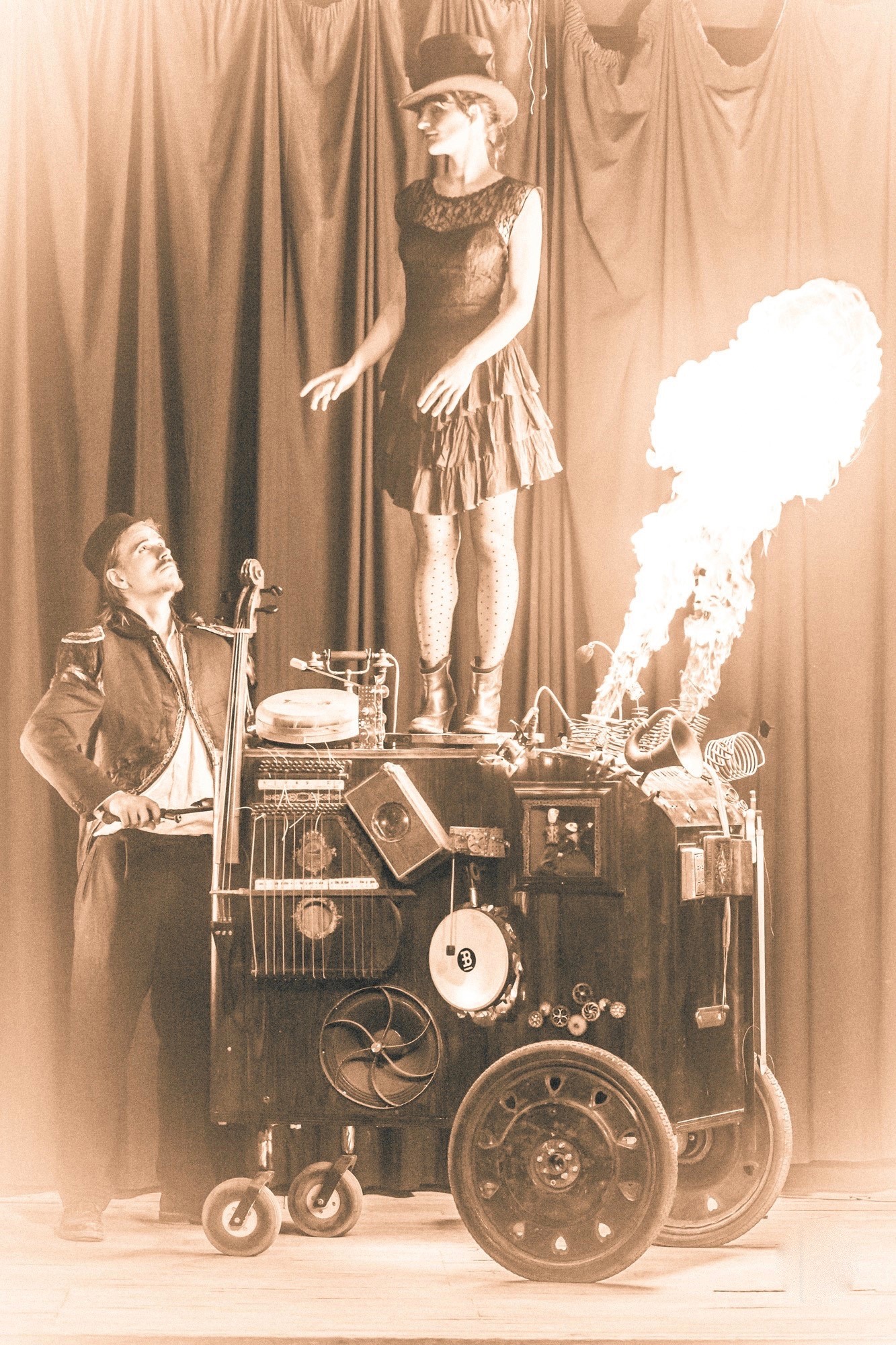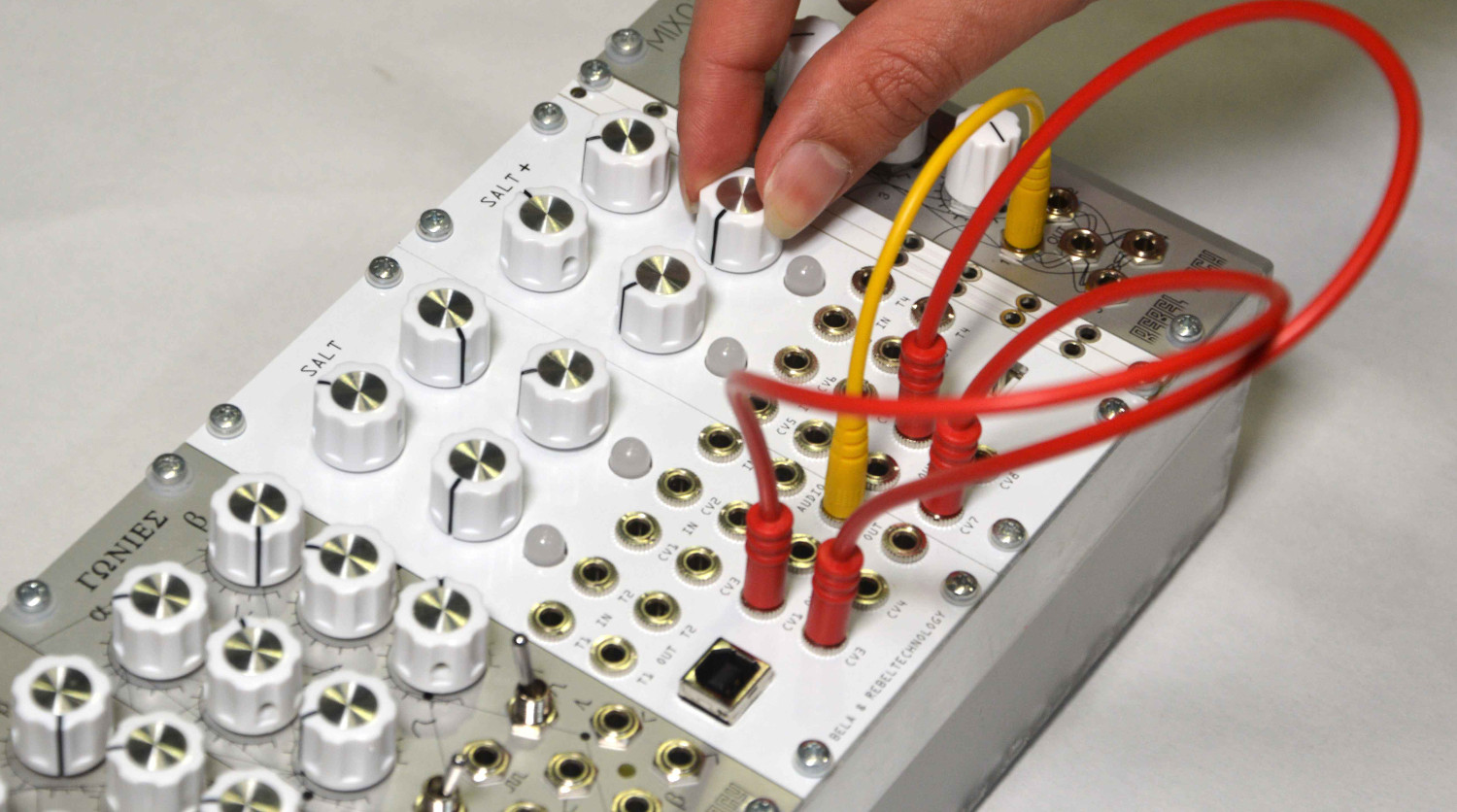Giraf
A self-contained polyphonic sampler
This post introduces Giraf, a polyphonic sampler created Hjalte Bested Møller. The instrument uses Bela in combination with a distance sensor, piezo disc, and embedded speakers to create a mobile sampling unit that is somewhere between a classic sampler and a theremin! Over to Hjalte:
The instrument
The basis of Giraf is a polyphonic sampler where a sample can be played by hitting the “sound trigger” pad – the amplitude of the sound is determined by how hard the pad is struck. The pitch of this triggered sample can then be controlled by a infra-red distance sensor, in such a way that the further the hand is from the sensor, the lower the pitch. Instead of having continous control, the pitch that is actually played is determined in relation to a selected musical scale making harmonically related results easier to acheive.

Signal path and effects

Alongside the main sampler Giraf has multiple built-in effects.
- FX1 – Sampler Gain
- FX2 – Biquad Filter
- The button switches between: Bypass, Lowpass, Highpass and Resonant Bandpass
- The knob controls the cutoff frequency.
- FX3 – Feedback Delay Line
- The button switches the effect on/off
- The knob controls the delay time
- FX4 – Reverberator
- The button switches the effect on/off
- The knob controls how much signal goes to the room
- The action buttons playback the performance in reverse, with the right button resulting in normal pitch and the left button in double pitch and tempo
- The Looper:
- When the green button is pressed once, sound is recorded until the button is pressed again, which starts overdub mode.
- When no more overdubbing is required, the button can be pressed a third time to enable playback mode.
- The red button clears the buffer and prepares the looper for a new recording.
Software and technical notes
The code implementation is written in C++ and it was programmed using the browser-based Bela IDE, which runs on a server on the Bela itself – no internet required. Using C++ and working with Bela allowed me to keep everything very fast and responsive. There was a total of ~66 samples group delay, that is - at 44.1kHz - 1.5ms of latency from trigger to the sound coming out: thank you Bela!!!

The insides of the instrument.
About Hjalte Bested Møller
Hjalte Bested Møller started making electronic music about 20 years ago. From 2006-2009 he was part of the cyber-jazz project “Badun” where he got into sound design and programming with MaxMSP and SuperCollider. In 2012 he started the interactive music/tech art performance project Tromleorkestret where he got into microcontroller programming, using mainly Arduino to create custom interfaces to his Max and SuperCollider patches. He is educated as a Civil Engineer in Robotics and Electrotechnology at the Technical University of Denmark where he currently works on the development of teaching material for a DSP course. The material is focused on embedded audio and the Bela is the platform used in the course.

Hjalte in performance mode with Tromleorkestret.
Thanks to Hjalte for sharing this project with us!



